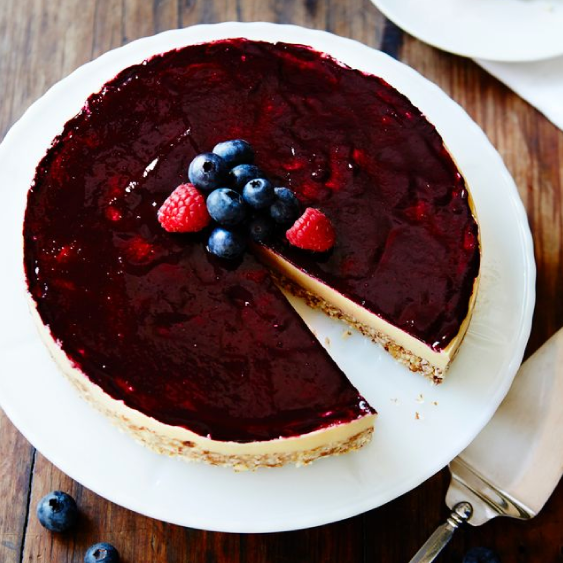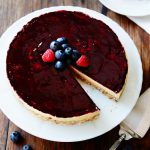Last updated on June 18th, 2019
Why Do I Feel So Tired After Eating?
Food is designed to energise us, right? Yet why is it that so many people feel a post-lunch slump? How often have you observed someone or even felt yourself crash after you’ve eaten a somewhat ‘healthy’ lunch. How can food, the very thing that is supposed to give us energy actually lead us to feel more lethargic? Let’s explore some of the biochemical, nutritional and emotional factors that impact whether food energises or exhausts you.
Digestion
The old adage you are what you eat isn’t quite correct; instead you are what you eat, absorb and assimilate. There are a number of factors that can affect our ability to digest and utilise the nutrients from food including stress hormones, caffeine and medications such as antibiotics to name a few. Stress is particularly important to consider when it comes to digestive function, as too many people spend their days in Sympathetic Nervous System (SNS) dominance – a constant state of ‘fight or flight’, with high circulating levels of adrenalin. This can have a devastating effect on our ability to effectively produce stomach acid and thus can result in reflux, digestive discomfort or lethargy after eating. One in five women in Australia experience Irritable Bowel Syndrome (IBS), and of course food plays a major role in this, but so does the relentless production of adrenalin. From your body’s perspective if it thinks you’re preparing to fight/take flight, it diverts blood flow away from what it considers non-vital processes such as digestion. All resources go into saving your life from the danger your body perceives you are in, due to the high levels of adrenalin.
What and how you eat are also critical to your ability to absorb nutrients and obtain energy from food. Eating a wholefoods diet rich in fresh vegetables, nuts, seeds, some fruit, proteins and good fats fuels most people. The key to sustained energy from food is in the energy release, as well as the fuel your body perceives it needs to use to keep you ‘safe’. In any given moment the body is making a decision about which fuel to use and it can only choose glucose or fat or a combination of both. When you are stressed your body tends to use more glucose instead of effectively utilising body fat as a fuel, as it thinks you need a fast-burning fuel (glucose, not fat) to get you out of the ‘danger’ your body thinks you are in.
When you eat foods that contain fibre such as fresh vegetables, numerous factors in the vegetables – particularly the fibre – help to slow the release of glucose into the blood. This results in a more sustained release of energy. Real foods typically and naturally contain more fibre, vitamins and minerals (than highly processed foods) and therefore, provide more of a challenge for the digestive system. Think of a piece of white bread when it’s cooked in a toaster, it burns readily – it does essentially the same in your body. You want slow burning fuels and fats and proteins help to sustain energy release. Yet another way to slow the energy release from your food is to eat slowly. Be mindful of what and how you eat.
If you are feeling tired almost immediately after eating/within the hour afterwards, it’s usually just because of vasodilation or widening of the blood vessels supplying your intestines, as part of the normal parasympathetic response or ‘rest and digest’ response to the food entering your stomach. The body wants to maximize nutrient absorption into the bloodstream as well as maintain perfusion to the churning stomach etc. This redirection of a portion of blood volume to the ‘non-essential’ organs can make many people feel tired after a big meal! if you are feeling tired almost immediately after eating/within the hour afterwards, it’s usually just because of vasodilation or widening of the blood vessels supplying your intestines, as part of the normal parasympathetic response or ‘rest and digest’ response to the food entering your stomach. The body wants to maximize nutrient absorption into the bloodstream as well as maintain perfusion to the churning stomach etc. This redirection of a portion of blood volume to the ‘non-essential’ organs can make many people feel tired after a big meal!
Fats and fatigue
Fat chosen from real, wholefood sources are imperative for optimal health. Real food fat is satiating. It can help mediate inflammation in the body, is an integral part of a healthy immune system, is essential for the health of your skin, eyes, nails and hair and you need to eat fat to help you burn fat as an energy source! Good fats slow down the release of glucose into your blood stream meaning you actually feel satisfied for longer. Consuming the right kind of organic wholefood fats (such as avocado, nuts, seeds, coconut, butter, sustainable oily fish, pasture-fed meats) can also help people curb their desire for sweet food. Incorporate good fats into your lunch and observe if you feel more alert, fuelled and content, and notice if this alone helps you cruise rather than crash after lunch.
Blood glucose
The post-lunch slump can also be triggered by your choice of food or drinks. For example, when you consume white bread your body quickly absorbs the fibre-less and fat-less starches (which are converted rapidly into sugars) and the glucose moves from your digestive system across into the blood, and spikes your blood glucose levels. This stimulates the production of insulin and subsequently signals to your body to store body fat, as insulin communicates ‘storage’ not ‘utilisation’ to the body. Inflammation increases, triglycerides are raised (essentially fat in your blood), and leptin, one of the hormones involved in appetite regulation, is blocked. Insulin stops the body being able to ‘hear’ the leptin message. Leptin is responsible for signalling to your brain that you’re satisfied, and if the brain doesn’t receive this message, you are more likely to continue eating. This partially explains why many people who follow low fat, high carbohydrate diets can experience the feeling of never being full or feeling hungry all the time.
If you amp yourself up on caffeine, live on adrenalin due to your perception of pressure and urgency, or push your body intensely during cardiovascular exercise, you will keep your body in a state of SNS dominance and you will predominantly burn glucose as a fuel (not body fat) and you will crave sugar to replenish your stores. Slow down! I cannot emphasise enough the importance of activating the rest, digest and repair arm of the nervous system – known as the Parasympathetic Nervous System (PNS) – using breath-focused movement, which allows your body to use body fat as a fuel more efficiently. Extending the length of the exhalation activates this arm of the nervous system as you would never breathe this way if your life truly was in danger. It therefore communicates to every cell in your body that you are safe and you consequently use fat as a fuel more efficiently. Not only will you feel a greater sense of calm, you are also far less likely to experience intense hunger that might result in you eating the entire contents of the pantry.
Food ‘sensitivities’
Your post-lunch fatigue may be due to a food sensitivity – in other words you don’t have the ‘equipment’ to break a particular food down effectively. This could be poor digestive enzyme production, poor liver detoxification enzyme production, poor stomach acid production, or an immune-based response. Working with an experienced health professional to help you decipher this if you suspect this is the basis of your post-lunch slump can literally change your life!
Many people consume foods or drinks that don’t serve them and the body might give you symptoms to let you know this. We then need to respond to the body asking us to do something differently. Continuing to drink three coffees a day despite it giving you reflux and making your heart race is not wise. Or, you might be a person who has a sandwich everyday for lunch and in the 15 minutes following this it feels as though you could fall asleep under your desk. We are all different when it comes to what serves us from a nutritional perspective, however, many people experience food sensitivities. The challenge is we currently have very poor methods to establish food reactions. The science and testing in this area needs to be further developed and quickly.
An underlying factor in many gut problems is food sensitivities. To determine which foods could be a problem, a supervised elimination diet can be insightful. Foods that are most likely to cause digestive distress in susceptible individuals include gluten, milk products, fructose, beans and legumes (such as soy and peanuts), refined sugars and artificial sweeteners (including those found in protein products, chewing gum and mints). There are also components of foods such as phenolic compounds, rich in sulfur, that may cause problems if too much is eaten at once. In this case an enzyme made by the liver is necessary to deal with the phenolics. If your liver can’t keep up with the load you are consuming, you may notice, gut, skin or fatigue-type symptoms, for example.
The theory behind the elimination diet is if you eliminate these common but often problematic foods for several weeks and then re-introduce them one at a time, four days apart, you will have a good idea how your body responds to them. An elimination diet is best undertaken with guidance from a health professional. You want to do it right so you have your answers at the end of it.
Another dietary concept which can be of benefit to people with gastric dysfunction and/or post-lunch fatigue is FODMAP’s. FODMAP’s is an acronym for five types of carbohydrates that can cause gastric discomfort. F stands for fermentable carbohydrates; these are carbohydrates that are fermented by bacteria rather than broken down by our digestive enzymes. O stands for oligosaccharides, which are short chain carbohydrates, often associated with fructose. D stands for disaccharides; the most common and problematic disaccharide for most people is lactose – the sugar in milk. M stands for monosaccharides, a single sugar molecule such as fructose. And finally, P is for Polyols, a type of sugar alcohol. Common FODMAP foods are not limited to but can include wheat, beans, lentils, milk, garlic, onion, stone fruits and fruit juices.
For some people, if FODMAP-rich foods aren’t broken down and absorbed effectively in the small intestine then the food travels to the large intestine to be fermented by bacteria causing health challenges. For most people FODMAP-containing foods are digested and absorbed in the small intestine and then any left over food is fermented in the large intestine. For most this is a completely functional process that does not result in any discomfort or issues. However, people who are sensitive to these foods (or they have other digestive system challenges due to their gut bacteria profile, poor stomach acid production, an altered pH gradient in the gut, or stress hormones are constantly diverting blood away from the gut to the periphery to fight the perceived danger) find that the carbohydrates are not broken down and absorbed in the small intestine. When food is left in the large intestine, mostly undigested it will ferment, which can result in bloating, abdominal cramps, excessive wind and diarrhoea, not to mention the fatigue that can then result. Remember too, that most of your immune system lines your gut so the key to healthy, appropriate immune responses is often mediated through the gut.
How our thoughts can influence feelings of tiredness
Notice if you what you just said, did or ate fosters energy or depletes it, in you and for those around you. Food is designed to energise us and if what you just ate has led you to feel like you want to go to sleep then reflect on what aspect of that meal may have caused that. Or seek the help of an experienced health professional to guide you. Our body doesn’t have a voice but it regularly gives us feedback, suggesting that we eat, drink, move, think, breathe, believe, or perceive in a new way so see these messengers – even post-lunch slumps – as the gift that they are. We can learn, grow and contribute from such a process of enquiry.









